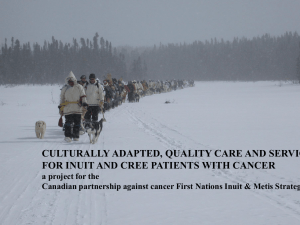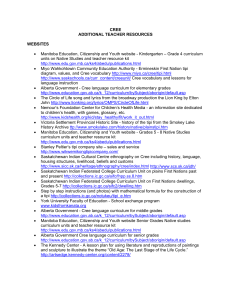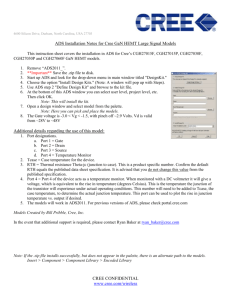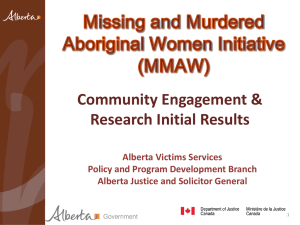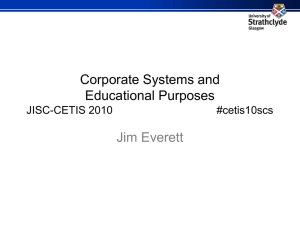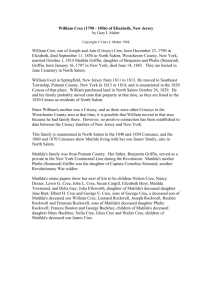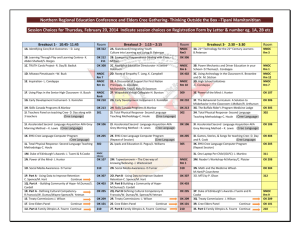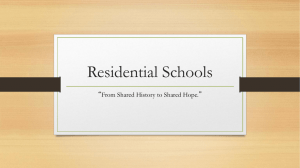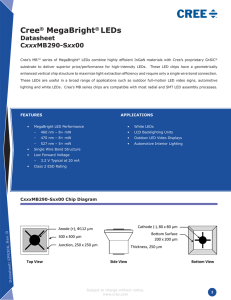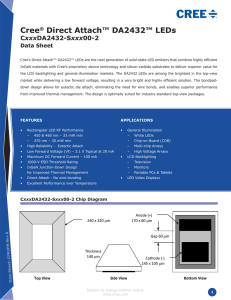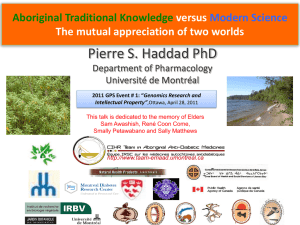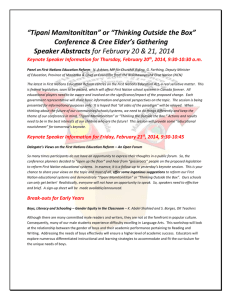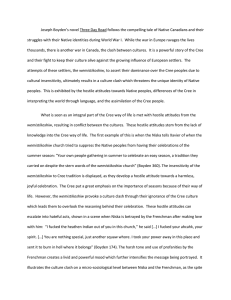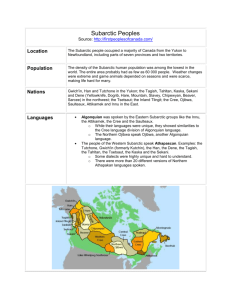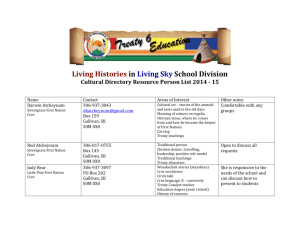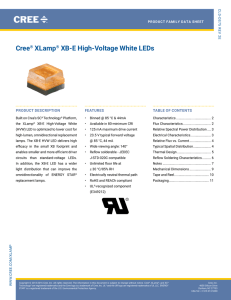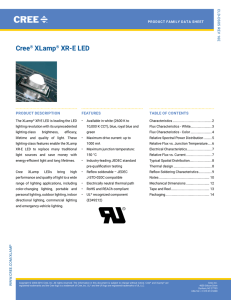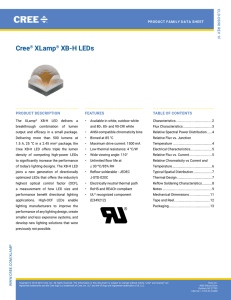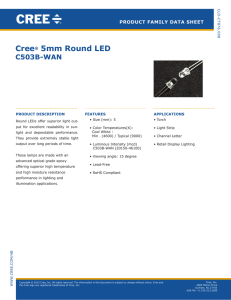LANGUAGE DESCRIPTION AND LINGUISTIC FIELDWORK
advertisement
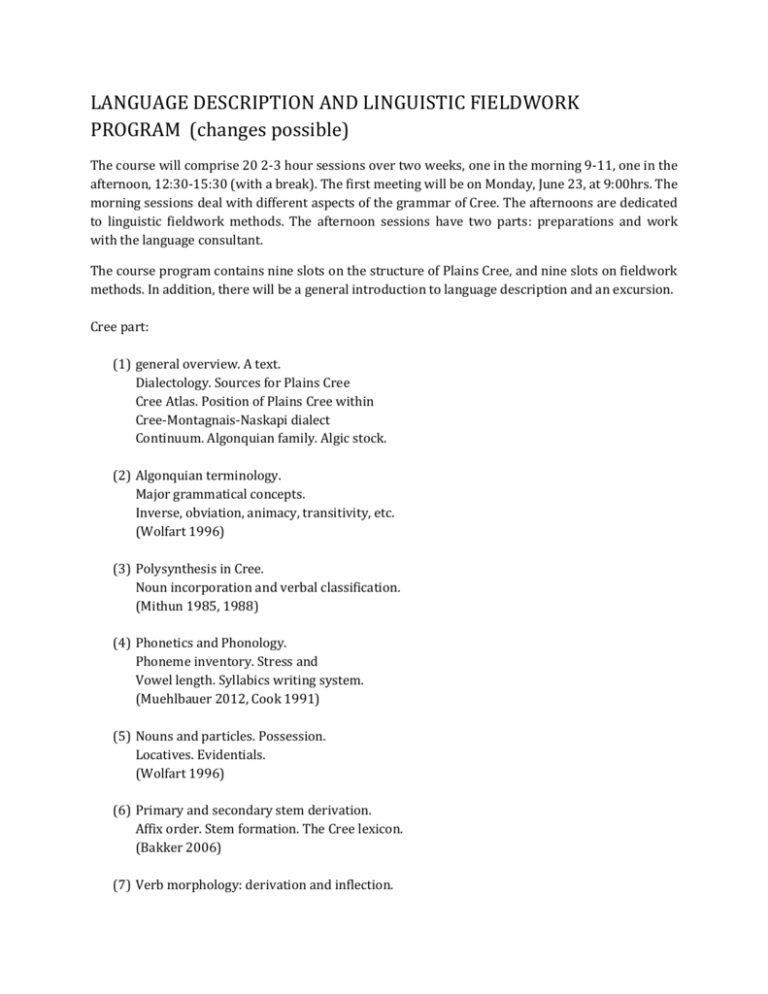
LANGUAGE DESCRIPTION AND LINGUISTIC FIELDWORK PROGRAM (changes possible) The course will comprise 20 2-3 hour sessions over two weeks, one in the morning 9-11, one in the afternoon, 12:30-15:30 (with a break). The first meeting will be on Monday, June 23, at 9:00hrs. The morning sessions deal with different aspects of the grammar of Cree. The afternoons are dedicated to linguistic fieldwork methods. The afternoon sessions have two parts: preparations and work with the language consultant. The course program contains nine slots on the structure of Plains Cree, and nine slots on fieldwork methods. In addition, there will be a general introduction to language description and an excursion. Cree part: (1) general overview. A text. Dialectology. Sources for Plains Cree Cree Atlas. Position of Plains Cree within Cree-Montagnais-Naskapi dialect Continuum. Algonquian family. Algic stock. (2) Algonquian terminology. Major grammatical concepts. Inverse, obviation, animacy, transitivity, etc. (Wolfart 1996) (3) Polysynthesis in Cree. Noun incorporation and verbal classification. (Mithun 1985, 1988) (4) Phonetics and Phonology. Phoneme inventory. Stress and Vowel length. Syllabics writing system. (Muehlbauer 2012, Cook 1991) (5) Nouns and particles. Possession. Locatives. Evidentials. (Wolfart 1996) (6) Primary and secondary stem derivation. Affix order. Stem formation. The Cree lexicon. (Bakker 2006) (7) Verb morphology: derivation and inflection. Affix order. Relative roots. (Bakker 2006, Wolfart 1996) (8) Historical linguistics. Reconstruction. Wider connections of Algonquian. (9) Cree literature. Spelling systems. Pragmatics. Syntax. Text reading. Miscellanea. (Darnell 1991)(Starks 1993; slightly different dialect; There is nothing about Plains Cree syntax). Fieldwork methods part: (1) Preparing for the field: Ethical field research, language consultants, technology & materials. (Sakel & Everett 2012, Chapters 4 & 5; Grinevald 2003; Rice 2006) (2) First look at the data. Phonetics & lexicon. (Sakel & Everett 2012, Chapter 6.3; Anderson 2008; Ladefoged 1997/9) (3) Data organization and archiving (Sakel & Everett 2012, Chapters 6.2 & 7.2; Boynton & al 2010; Johnson 2004) (4) Lexical elicitation (context, translation & judgments): Lexicon and semantics. (Sakel & Everett 2012, Chapter 6.4) (5) Elicitation (questionnaires, judgments): Morphology and syntax. (Heegård Petersen 2006; Mithun 2012; Morgenstierne 1973) (6) Elicitation (stimuli): Morphology and syntax. (Sakel & Everett 2012, Chapter 6.6; Majid 2012) (7) Interviews, questionnaires: Attitudes and speaker perceptions. (Sakel & Everett 2012, Chapter 6.5 & 6.7; Lesho & Sippola 2013; Meyerhoff & al. 2012) (8) Interviews, text collection: Discourse and pragmatics, culture. (Sakel & Everett 2012, Chapter 6.8) (9) Corpus design, speech styles, cultural documentation.
